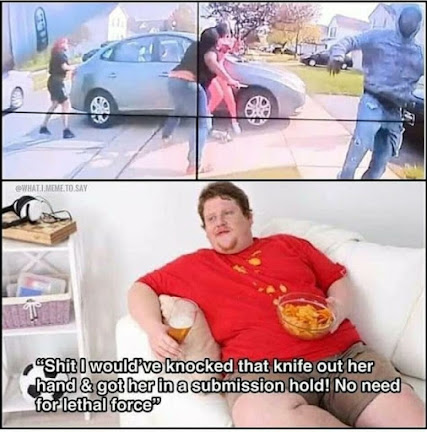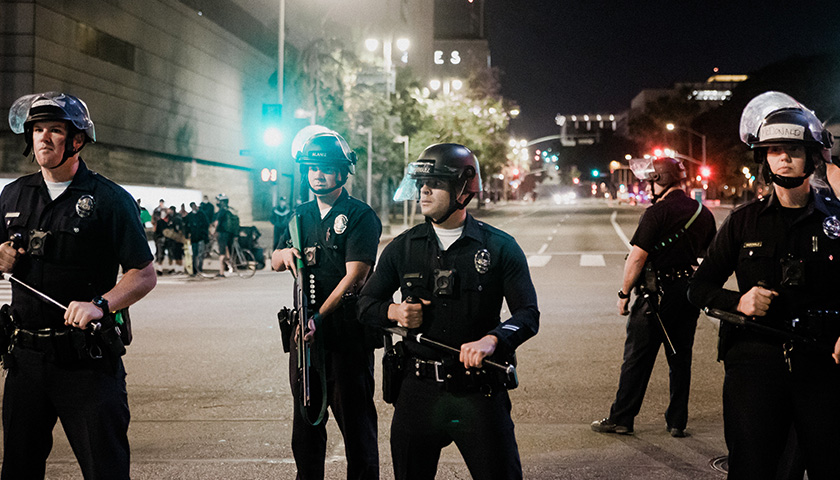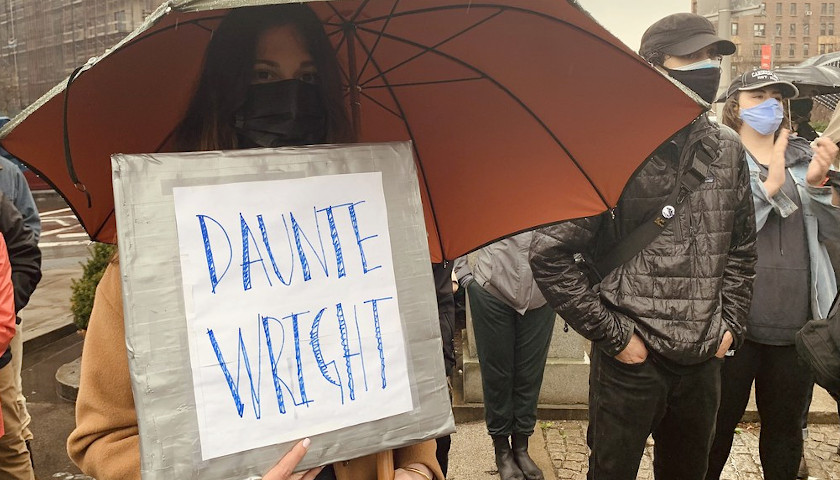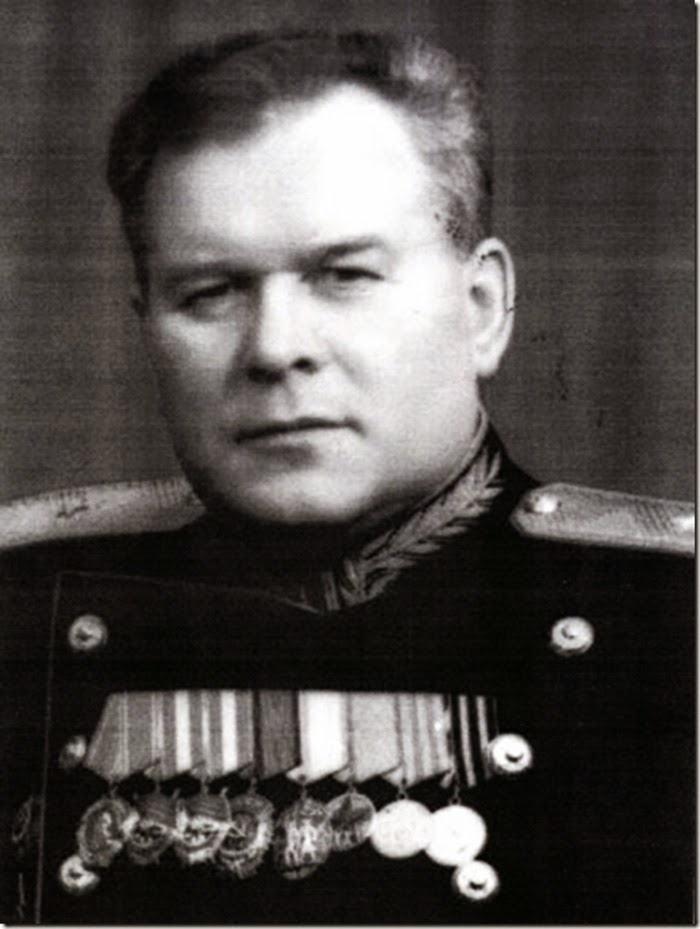Who cares what your issues are? Can you do the job should be the issue!
Category: Grumpy’s hall of Shame

I am sure you could Bubba!

by Scott McKay
We will never hear the last of these names. Eric Garner. Alton Sterling. Michael Brown. George Floyd. Rashad Brooks.
And now Daunte Wright.
We will never hear the last of them because there will always be more. And because certain people are invested in forcing us to hear about them.
But what they demand we hear isn’t the truth.
Is it a tragedy that Daunte Wright is dead? Of course it is. Should he have been shot dead on Sunday by a Brooklyn Center, Minnesota, police officer? Why, no – he shouldn’t have been.
We can get this out of the way very easily. The Brooklyn Center police department employed, it appears, a female cop who after 26 years on the force can’t tell the difference in a stressful situation between a taser and a Glock pistol. To call this a failure of hiring and training would be a rather generous statement.
There was something of a hue and cry over the firing of the city manager in that Minneapolis suburb because he called for the officer to be given due process, but the fact of the matter is that the most likely result of due process in the Daunte Wright case is firings up the chain of command anyway. The officer in question, Kim Potter, who was a former police union local president, has already resigned. The police chief, Tim Gannon, has also resigned. Mike Elliott, the African American Democrat mayor of Brooklyn Center, seems pretty intent on throwing under the bus as many underlings as possible in order to save himself, but he probably ought to go, too.
Particularly after what the mob did to Brooklyn Center in response to the Daunte Wright shooting.
We could have an argument about “diversity hiring” here. We could also have an argument, as Reason.com was insistent on raising Monday, about the deadly stupidity of laws like the one Minnesota has criminalizing the hanging of air fresheners or other items from the rearview mirror of a car. Reason‘s Billy Binion pronounced Daunte Wright dead as a result of that idiotic statute.
He’s wrong. That law, disgracefully ridiculous though it might be, did not kill Daunte Wright.
Daunte Wright, or at least the life he led, killed Daunte Wright.
He wasn’t pulled over because he had air fresheners hanging from his rearview mirror. He was pulled over because he had expired tags on his license plate. Then it was noticed that he had air fresheners hanging from his rear view.
Then it was noticed he had an outstanding warrant.
Then it was noticed he resisted arrest.
Then it was noticed he got back in his car and drove away from the police. Which he had done before, as it turned out; Wright had fled from officers in June. The circumstances from which that police encounter arose make for scintillating reading. He was reported to the police for waving a gun around, and when the cops showed up it turned out Wright didn’t have a permit for the gun.
He ran away. And he was cited and ordered to appear in court. He didn’t, which occasioned the warrant for his arrest.
That’s not all that appears on Wright’s record. There was the February arrest for aggravated robbery. There was a disorderly conduct charge arising from a 2019 incident. There was the guilty plea in late 2019 to possession and sale of marijuana. And there was an arrest warrant for armed robbery; Wright was accused of choke-holding a woman and threatening her at gunpoint, demanding $820 intended to pay her rent.
Daunte Wright dropped out of high school, then fathered a child out of wedlock he couldn’t support with minimum-wage jobs and petty drug dealing. He had borrowed $50 from his parents to take his car to a car wash and had his girlfriend in the car with him, with expired license tags. He was stopped by the police, resisted arrest, and then attempted to drive away — which raised the likelihood that he would expose his girlfriend to bodily harm. She was apparently injured when, as he bled out following being shot by Officer Potter, he crashed the car attempting a getaway.
In other words, this is someone who chose to be a penny-ante John Dillinger. He ended up with the full ante.
His parents are justifiably upset at his death. The loss of a child is one of the most heartbreaking events anyone could bear. Certainly our sympathies go out to them.
But Daunte Wright’s father called him “a great kid.” He said he was “a normal kid. He was never in serious trouble. He enjoyed spending time with his 2-year-old son. He loved his son.”
Great kids don’t fight with and then flee the cops. Great kids don’t bring the police around because they’re waving guns. Great kids aren’t arrested for aggravated robbery or for dealing drugs.
Or, in the community Daunte Wright came from, maybe they do. Maybe that’s great.
If so, that’s a lot bigger problem than the incompetence of the politicians and police in Brooklyn Center, Minnesota.
But that isn’t something you’ll hear much about, is it?
You aren’t even allowed to talk about the fact that this 20-year-old kid had already messed up his life and may have been well on his way to becoming a career criminal. Daunte Wright had perpetuated the cycle of out-of-wedlock childbirth, academic failure, the inability to learn and deploy a marketable skill, and escalating criminal behavior that so horrifically afflicts the black community in this country.
If Daunte Wright’s life was “great” and not substandard, then we will never be rid of these tragedies. And they’re all fundamentally the same — career criminal on the fringe of society, a failure in life, involved in drugs (if not high at the time; we’ll know later what the toxicology report shows), likely faced with prolonged jail time upon arrest and resisting arrest.
How do you prevent deaths like Daunte Wright’s? You try to prevent young men from living lives like Daunte Wright’s.
But you aren’t allowed to say that. Neither Joe Biden nor Kamala Harris, both of whom had the opportunity to lead but instead chose to pander to the mob, would say it. Nor would Minnesota’s Gov. Tim Walz, another pandering Democrat responsible for more of his state’s destruction than perhaps all of his predecessors combined.
Wright’s family hired — of course! — the race-hustling attorney Ben Crump, who has made his entire livelihood trying cases like this in the media as the cities where they happen burn. Crump’s street-criminal clients, or more specifically their families, often pull nice settlements out of local governments despite weak evidence of actual malfeasance.
This case, owing to the Barney Fife nature of the gunplay involved, might be Ben Crump’s best yet. Which isn’t saying much.
So he was on the scene in Brooklyn Center almost before the body was cold.
“Daunte Wright’s life matters,” Crump said.
Well, of course it matters. It matters to Ben Crump. Daunte Wright will be a nice paycheck for him. And so will the next Daunte Wright, and the one after that. Before too long, Ben Crump will be able to buy a million-dollar house in Topanga Canyon near Black Lives Matter founder Patrisse Cullors’ fresh crib.
It isn’t a coincidence that nobody is interested in preventing lives like Daunte Wright’s but rather celebrating them. Daunte Wright’s funeral will be a lot bigger deal than David Dorn’s. There will be murals painted and stores burned and looted in his honor.
And then there will be a fat settlement. Daunte Wright will end up worth a whole lot more dead than he ever was alive.
So long as this tragic cycle can’t be called out for the horrific farce that it is, it will continue. But it can’t. And the next Daunte Wright will only keep the wheel turning around and around.
Happy April 15!!!

George the Third of England must be busting a gut right about now! Grumpy


DALLAS (AP) — Wayne LaPierre flies exclusively on private jets, he sailed around the Bahamas for “security” and he never sends emails or texts in the course of his work running the nation’s most politically influential gun-rights group.
LaPierre’s testimony this week during the National Rifle Association’s high-stakes bankruptcy trial offered a rare window into the work and habits of the notoriously secretive titan of the American firearms movement.
Seldom seen in public outside choreographed speeches and TV appearances, the 71-year-old was blunt and occasionally combative under lawyers’ questioning. He took the virtual witness stand in a federal case over whether the NRA should be allowed to incorporate in Texas instead of New York, where the state is suing in a separate effort to disband the group over alleged financial abuses.
LaPierre’s testimony revealed him to be an embattled executive defending his leadership and punching back against what he characterized as a political attack by New York Attorney General Letitia James. But he also tried to acknowledge enough mistakes and course corrections to avoid having the NRA’s reins handed to a court-appointed overseer — a move he said would be a death blow to the 150-year-old group that claims 5 million members.
The NRA declared bankruptcy in January, five months after James’ office sued seeking its dissolution over allegations that executives illegally diverted tens of millions of dollars for lavish personal trips, no-show contracts and other questionable expenditures.
The NRA contends that its Chapter 11 filing is a legitimate maneuver to facilitate a move to a more gun-friendly state, Texas, and was made necessary by a Democratic politician who has “weaponized” her state’s government. Lawyers for James’ office, meanwhile, say it’s an attempt by NRA leadership to escape accountability for using the group’s coffers as their piggybank.
LaPierre appeared on camera before a court in Dallas on Wednesday and Thursday and was grilled by lawyers for New York and Ackerman McQueen, an Oklahoma City-based advertising agency that says the NRA owes it more than $1 million.
The questioning has focused on LaPierre’s management of the NRA and the legitimacy of his filing for bankruptcy without first informing most of the group’s top executives and its board.
On Wednesday, a lawyer for New York asked why the state’s investigation had turned up no emails or text messages from LaPierre.
“I’m old fashioned,” he replied. “I haven’t sent any emails or texts.”
The allegations of financial abuses and mismanagement have roiled the NRA and threatened LaPierre’s grip on power. Political infighting spilled out in public during the NRA’s 2019 annual meeting, where its then-president Oliver North was denied a second term. Tensions also eventually led to the departure of a man who’d been seen as LaPierre’s likely successor, Chris Cox, who headed the group’s lobbying arm.
To be sure, it’s not unusual for chief executives of organizations the size of the NRA to travel by private plane or live lifestyles beyond the means of most people. But LaPierre’s alleged misspending of NRA membership dues came even as the group was urging supporters to donate so that it would have enough cash to battle gun control efforts.
Board members and former NRA leaders who support LaPierre didn’t respond to requests for comment or referred questions to the NRA. Others who are skeptical of LaPierre’s leadership said the trial has only reaffirmed their concerns.
“I’m looking for the next Wayne,” said Phillip Journey, a board member and Kansas judge who is set to testify during the trial next week. “This can’t go on forever.”
LaPierre said Thursday that he kept the bankruptcy secret from the full board because he was worried that someone on it would leak the plan. “We were very concerned,” he testified.
He also said he was within his authority to file for bankruptcy with only the assent of the board’s three-member special litigation committee, he attacked James and New York’s financial regulator as “corrupt,” and he repeatedly strayed beyond the bounds of yes or no questioning to defend his record.
LaPierre’s efforts to explain his actions led to opposing lawyers moving to strike from the record much of what he said after nearly every question. He occasionally raised his voice and his expansive answers drew repeated warnings from his own attorneys and the judge.
“Can you answer the questions that are asked and do you understand that I’ve said that to you more than a dozen times in the last two days?” Judge Harlin Hale asked LaPierre on Thursday.
“I understand your honor,” he replied. “I apologize if I’ve gone too long.”
LaPierre also, however, showed moments of regret and referred repeatedly to the NRA’s “self-correction.”
For instance, he defended summer sailing in the Bahamas on a large yacht he borrowed from a Hollywood producer who has done business with the NRA. LaPierre said the family trips were a “security retreat,” noting that some came as he was facing threats months after mass shootings.
But he acknowledged that not mentioning the voyages on conflict-of-interest forms — which New York’s lawsuit contends violated NRA policy — was an oversight.
“I believe now that it should have been disclosed,” he testified. “It’s one of the mistakes I’ve made.” ___
Associated Press writer Lisa Marie Pane in Boise, Idaho, contributed to this story.

After almost a year of nonstop violent riots by Black Lives Matter, Antifa, and other far-left domestic terrorist organizations in the city of Portland, over 100 of the city’s police officers have quit the force out of protest of the city’s failure to adequately handle the violence, according to Fox News.
The report first came from the newspaper The Oregonian, which said that since July of 2020, approximately 115 officers have left the department to take lower-paying jobs just to get out of the dangerous environment. The paper described it as “one of the biggest waves of departures in recent memory.”
Out of 31 exit interviews from officers who left during this time period, the general consensus was that the officers quit because they felt that they were receiving “zero support” from the community and local leadership. One officer said that “the city council are raging idiots, in addition to being stupid,” and that “the mayor and council ignore actual facts on crime and policing in favor of radical leftist and anarchist fantasy.”
As a result of the spike in riots, which began last summer after the accidental overdose death of George Floyd while in police custody in Minneapolis, Portland also saw its homicide rate surge to its highest point in 26 years, with 55 deaths over the course of 2020. Numerous efforts by Mayor Ted Wheeler (D-Ore.) to try to curb gun violence in the city, through special police forces and various multi-million dollar studies, have all failed thus far. Wheeler and other local leaders were widely criticized for refusing to crack down on the riots, with their inaction attributed to the fact that they shared many of the same political stances as the far-left rioters.
– – –
Eric Lendrum reports for American Greatness.
Vasily Blokhin is recorded as having executed tens of thousands of prisoners by his own hand, including his killing of about 7,000 Polish prisoners of war during the Katyn massacre in spring 1940, making him the most prolific official executioner in recorded world history. He was the NKVD major in charge of executing the Polish officers from the Ostashkov camp, and he believed in personally doing the killing that his superiors had ordered him to supervise.
Born in 1885, he was known as the NKVD’s chief executioner, having been hand-picked for this position by Joseph Stalin himself. Blokhin personally killed tens of thousand of men and women during Stalin’s Great Purges of the 1930s, so it was only natural that the NKVD would turn to him when it came time to dispatch the officers held in the Soviet prison camps. Along with a team of about thirty NKVD men from Moscow, mainly drivers and prison guards, Blokhin arrived at the NKVD prison in Kalinin (Tver) and set himself up in a sound-proofed cellar room that had a sloping floor for drainage. He then put on his special uniform, consisting of a leather cap, long leather apron, and elbow-length gloves. On a table next to him was a briefcase filled with his own personal Walther PPK pistols, for Blokhin, a true artist at his trade, would use no one else’s tools but his own.
After the prisoner’s identity was verified, he was brought handcuffed into the cellar room where Blokhin awaited in his long apron, like some horrible butcher. One guard later testified: “The men held [the prisoner’s] arms and [Blokhin] shot him in the base of the skull…that’s all”. Blokhin worked fast and efficiently, killing an average of one men every three minutes during the course of ten-hour nights – the killings were always done at night, so that the bodies could be disposed of in darkness.
Although this has never been completely proven, historians suspect that Blokhin shot 7,000 men over a period of twenty-eight days, which would make him one of the most prolific murderers of all time. However many people he killed, Blokhin was consistently promoted by his superiors for performing “special tasks”. He lost his job after Stalin died. The cause of Blokhin’s death, in 1955, was listed as suicide.
Katyn massacre
The Katyn massacre, also known as the Katyn Forest massacre was a mass execution of Polish nationals carried out by the People’s Commissariat for Internal Affairs (NKVD), the Soviet secret police, in April and May 1940. The massacre was prompted by NKVD chief Lavrentiy Beria’s proposal to execute all captive members of the Polish Officer Corps, dated 5 March 1940. This official document was approved and signed by the Soviet Politburo, including its leader, Joseph Stalin. The number of victims is estimated at about 22,000.
- Blokhin initially decided on an ambitious quota of 300 executions per night; and engineered an efficient system in which the prisoners were individually led to a small antechamber—which had been painted red and was known as the “Leninist room”—for a brief and cursory positive identification, before being handcuffed and led into the execution room next door. The room was specially designed with padded walls for soundproofing, a sloping concrete floor with a drain and hose, and a log wall for the prisoners to stand against.
- He had brought a briefcase full of his own Walther pistols, since he did not trust the reliability of the standard-issue Soviet TT-30 for the frequent, heavy use he intended. The use of a German pocket pistol, which was commonly carried by German police and intelligence agents, also provided plausible deniability of the executions if the bodies were discovered later. Another reason he used the Walther rather than his standard issue Tokarev was the blow back. The Walther’s lower recoil made it easier for him (as well as other executioners for the NKVD) to kill large numbers of people in one night. Walthers were readily available due to the cooperation between the Soviets and Nazi’s in which the Germans ended up giving a fair amount of arms to their Soviet Allies.
- Each night, 24–25 trenches, measuring eight to ten meters (24.3 to 32.8 feet) total, were dug by a bulldozer to hold the night’s corpses, and each trench was covered up before dawn.
- Blokhin and his team worked without pause for ten hours each night, with Blokhin executing an average of one prisoner every three minutes. At the end of the night, Blokhin provided vodka to all his men.
- On April 27, 1940, Blokhin secretly received the Order of the Red Banner and a modest monthly pay premium as a reward from Joseph Stalin for his “skill and organization in the effective carrying out of special tasks”.
- His count of 7,000 shot in 28 days remains the most organized and protracted mass murder by a single individual on record; and saw him being named the Guinness World Record holder for ‘Most Prolific Executioner’ in 2010.
- Blokhin’s rank was stripped from him in the de-Stalinization campaigns of Nikita Khrushchev. He reportedly sank into alcoholism, went insane, and died February 3, 1955, with the official cause of death listed as “suicide”.
- The Soviet government admitted that the Soviet Secret Police were responsible for the Katyn massacre in 1990. Before that they claimed that the Germans did it. The Germans actually invited an international delegation to investigate the mass grave in 1943, which also concluded that the Soviets had done it. In order to try to ‘get away’ with it, the Soviets staged show trials against German POWs to blame them for Katyn, and tried to hold German defendants accountable for Katyn at Nuremberg (which the Allies refused).
The majority of an 11-judge en banc Ninth Circuit panel concluded that the Second Amendment does not guarantee the right to carry firearms outside the home.

SAN FRANCISCO (CN) — Americans have no right to carry guns in public, a divided en banc Ninth Circuit panel ruled Wednesday, reversing a prior Ninth Circuit decision that struck down a Hawaii firearm restriction as unconstitutional.
“There is no right to carry arms openly in public; nor is any such right within the scope of the Second Amendment,” U.S. Circuit Judge Jay Bybee, a George W. Bush appointee, wrote for the majority of an 11-judge panel in a 127-page opinion.
Looking back on 700 years of legal history dating back to 14th century England, seven judges in the majority found “overwhelming evidence” that the law has never given people “an unfettered right to carry weapons in public spaces.”
The seven-judge majority traced legal texts and laws back to 1348 when the English parliament enacted the statute of Northampton, which banned carrying weapons in fairs or markets or before the King’s justices. It also cited multiple laws from colonial and pre-Civil War America in which states and colonies restricted the possession of weapons in public places.
“The Second Amendment did not contradict the fundamental principle that the government assumes primary responsibility for defending persons who enter our public spaces,” Bybee wrote. “The states do not violate the Second Amendment by asserting their longstanding English and American rights to prohibit certain weapons from entering those public spaces as means of providing ‘domestic tranquility’ and forestalling ‘domestic violence.’”
Writing for the dissent, Senior U.S. Circuit Judge Diarmuid O’Scannlain, a Ronald Reagan appointee, said the majority failed to properly interpret the U.S. Supreme Court’s 2008 decision in District of Columba v. Heller, which overturned Washington D.C.’s total ban on handguns and a requirement that rifles and shotguns be kept unloaded and disassembled or bound by a trigger-lock device.
“The Second Amendment’s text, history, and structure, and the Supreme Court’s reasoning in Heller, all point squarely to the same conclusion: Armed self-defense in public is at the very core of the Second Amendment right,” O’Scannlain wrote.
Plaintiff George Young sued Hawaii in 2012 for denying his applications for permits to carry a concealed or openly visible handgun. A Hawaii state law requires a license to carry a gun in public.
Under a Hawaii County regulation, the police chief may only grant such licenses to those who need a gun for their job or who show “reason to fear injury” to their “person or property.” No one other than a security guard has ever obtained an open-carry license in Hawaii, lawyers for the county acknowledged during a Ninth Circuit hearing in 2018.
In July 2018, a divided three-judge Ninth Circuit panel ruled that carrying a gun in public is a constitutional right and that Hawaii cannot deny permits to all non-security guard civilians who wish to exercise that right.
On Wednesday, the en banc panel majority reversed that decision, finding the Supreme Court’s 2008 Heller decision is not inconsistent with state laws that restrict the right to carry arms in public.
“Heller found that the pre-existing right to keep and bear arms is not a right to ‘carry any weapon whatsoever in any manner whatsoever and for whatever purpose,’” Bybee wrote for the majority.
Young had argued that Hawaii’s 169-year-old law impermissibly limited open-carry permits to security guards, as applied in regulations adopted by the County of Hawaii in 1997.
During oral arguments last September, a lawyer representing the Aloha State said the law does not limit open-carry licenses to security guards. He cited the Hawaii Attorney General’s 2018 guidance stating that an applicant can obtain an open-carry permit by demonstrating “a need to carry a firearm for protection that substantially exceeds the need possessed by ordinary law-abiding citizens.”
The state says the attorney general’s 2018 guidance overrides the county’s 1997 regulation that ostensibly limits open-carry licenses to security guards.
Despite that argument, O’Scannlain found the fact that the 1997 regulation remains “on the books” and that Hawaii has never granted permits to a non-security guard civilian shows the state has been unconstitutionally restricting Second Amendment rights.
“In the County of Hawaii, the historical dearth of open-carry permits for private citizens is no mere ‘pattern or practice,’” O’Scannlain wrote. “It is a matter of official policy.”
In a concurring dissent, U.S. Circuit Judge Ryan Nelson, a Donald Trump appointee, argued the panel should have remanded the case back to district court to determine if Young could plausibly allege Hawaii’s law has been applied in an unconstitutional manner.
The failure to do so could have widespread consequences for people suing to protect their constitutional rights, he said, especially for litigants representing themselves without an attorney. Young originally filed his lawsuit pro se but was represented by lawyers in his appeal.
“It will preclude a host of future as-applied constitutional challenges under the First, Fourth, Fifth, and Eighth Amendments previously recognized by this court — especially for pro se civil rights plaintiffs,” Nelson wrote.
By upholding state laws that restrict carrying guns in public, the Ninth Circuit joined three other circuit courts that have issued similar rulings: the Second, Third and Fourth Circuits. Meanwhile, the D.C. Circuit and Seventh Circuit have struck down state laws that ban carrying guns in public. That makes the dispute ripe for Supreme Court review.
Although some circuit courts have upheld restrictions on carrying guns in public, Young’s attorney Alan Beck, of San Diego, argued that no court has gone as far as the Ninth Circuit did in its en banc opinion Wednesday.
“The Ninth Circuit’s opinion, which finds the Second Amendment right does not apply outside the home at all, contradicts the decisions of every federal circuit court in the country that has ruled on this issue,” Beck said in an email. “We will be seeking Supreme Court review in order to overturn the Ninth Circuit’s erroneous decision.”
Bill Clinton appointees William Fletcher, M. Margaret McKeown, Kim McLane Wardlaw, and Chief Ninth Circuit Judge Sidney Thomas joined Bybee in the majority. Circuit Judges Richard Clifton, a George W. Bush appointee, and Michelle T. Friedland, a Barack Obama appointee, also sided with the majority.
Circuit Judges Sandra Ikuta and Consuelo Callahan, both George W. Bush appointees, joined O’Scannlain and Nelson in the dissent.



